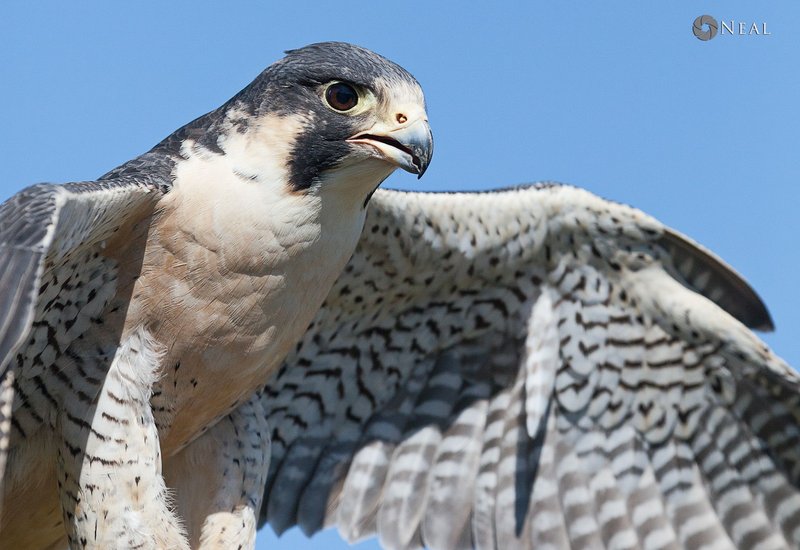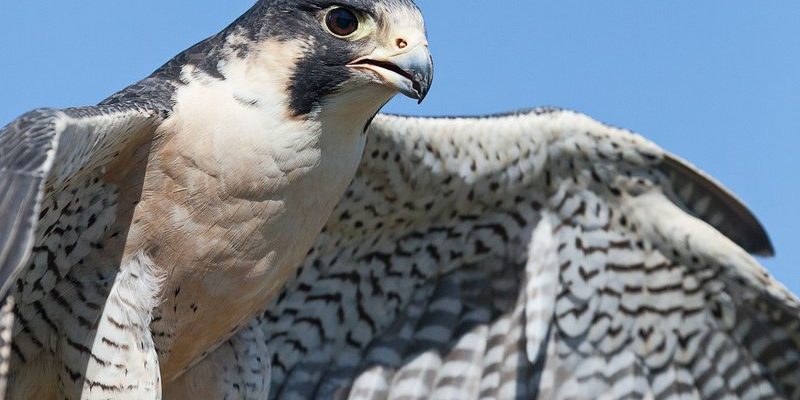
The status of the peregrine falcon is more complicated than it seems. Some regions say they’re thriving, while others show concern for their survival. In this blog post, let’s peel back the layers on the current state of the peregrine falcon. We’ll dive into their habitat, population trends, conservation efforts, and much more, to better understand whether these magnificent creatures are truly at risk or on the rebound.
What Makes the Peregrine Falcon Unique?
The peregrine falcon is not just another bird of prey. With striking blue-gray feathers and a distinctive black cap, they are often called the “fastest bird in the world.” But speed isn’t their only defining feature. These magnificent raptors are also known for their incredible eyesight, which allows them to spot prey from miles away. You might think of them as nature’s perfect hunters.
Their hunting technique is nothing short of spectacular. They soar high in the sky, scanning the area like experts, before diving at jaw-dropping speeds to catch birds mid-flight. It’s like watching a high-speed chase in the wild, and it’s a sight that leaves many wildlife enthusiasts in awe.
However, it’s worth noting that their rapid-fire lifestyle requires a lot of energy. This means that peregrine falcons need abundant food sources to thrive, which ties directly into their conservation status.
Are Peregrine Falcons Threatened or Endangered?
The answer to whether peregrine falcons are threatened or endangered really depends on which part of the world you’re looking at. In North America, the population has made a remarkable recovery since the 1970s. Thanks to strong conservation efforts, the peregrine falcon was removed from the U.S. Endangered Species List in 1999. At that time, some populations had rebounded impressively.
However, the situation is different in other parts of the world. For instance, some European populations still face challenges, primarily due to habitat loss and environmental pollution. Here’s a simple breakdown:
- North America: Generally stable, but local populations can vary.
- Europe: Facing challenges, particularly in urban areas where pollution is more prevalent.
- Asia: Some populations are considered threatened due to habitat loss.
So, while the overall global population appears stable, localized threats exist that can put certain groups at risk.
Factors Affecting Their Population
What causes the fluctuations in peregrine falcon populations? Well, several factors contribute to their status as either threatened or stable. One significant issue is habitat loss. Urbanization has transformed natural landscapes, affecting the availability of suitable nesting sites.
Another factor is environmental contaminants. For years, pesticides such as DDT harmed not just the peregrine falcon but many raptors worldwide. Though those specific chemicals are banned in many places today, remnants of these substances can still linger in the environment, affecting reproductive success.
Additionally, competition for food and nesting sites from other bird species can also impact their numbers. It’s a delicate balance in the ecosystem, and any change can tip the scales toward trouble.
Conservation Efforts
Here’s the thing: When it comes to protecting these majestic birds, proactive steps have made a tremendous difference. Conservation programs began in the mid-20th century, focusing on habitat protection and breeding efforts.
Programs like the Peregrine Fund have worked tirelessly to educate the public, monitor populations, and support habitat restoration. These efforts have proven successful, resulting in the reintroduction of peregrine falcons in areas where they had disappeared.
Engaging community members also plays a big role. Many cities have installed nesting platforms on skyscrapers, allowing falcons to breed in urban environments. Watching these birds thrive in places people live is not just a win for wildlife; it’s a win for humanity’s connection to nature.
The Role of Education and Awareness
Sometimes, the most powerful tool in conservation is awareness. Many people still don’t know about the struggles the peregrine falcon has faced. That’s why educational initiatives are vital. They inform the public about the importance of this species and encourage active participation in conservation.
When people understand what’s at stake, they’re more likely to take action, whether that’s supporting local wildlife groups or advocating for policies that protect habitats. Simple actions—like reducing pesticide use in gardens or supporting eco-friendly practices—can help.
How Can You Help?
You might be wondering how you can contribute to the survival of peregrine falcons. Here are a few easy ways to get involved:
- Support local wildlife organizations: Many groups focus specifically on birds of prey.
- Participate in citizen science: Help track local bird populations and report sightings.
- Educate others: Share what you learn about peregrine falcons to raise awareness.
- Advocate for conservation: Urge local governments to support habitat protection policies.
Every little bit helps, and by taking part, you’re contributing to the broader fight for biodiversity.
Looking to the Future
As we wrap this up, it’s essential to keep our eyes on the future for the peregrine falcon. While many populations are doing well, ongoing threats remind us that conservation is not a one-time effort but a continuous journey.
By remaining vigilant and proactive, we can ensure that these extraordinary birds continue to soar across our skies for generations to come. The peregrine falcon symbolizes resilience, and it’s up to us to ensure their legacy endures.
In conclusion, the peregrine falcon’s status varies by region, but with ongoing conservation efforts and public awareness, they can continue to thrive. Let’s support their journey—after all, a world with these magnificent birds is a world a little more vibrant, a little more awe-inspiring.

